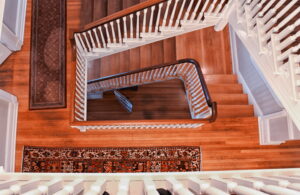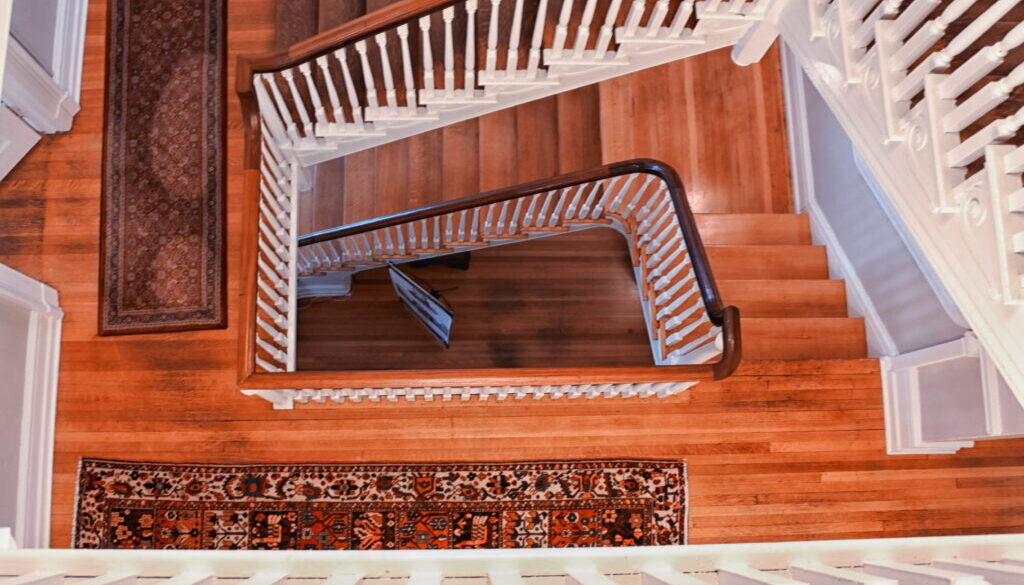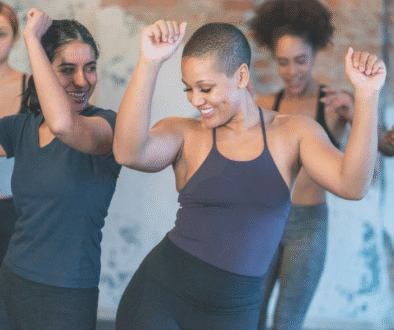Step It Up On the Stairs
By Aparna Mele, MD

You do not necessarily need complex and expensive gym equipment to get a good workout. You may not even have to leave your home! When it comes to easy at-home fitness, nothing could be easier than a stairs workout. You only need a set of stairs and a motivated attitude to get a killer and very high yield workout. Stair exercises can be an effective way to strengthen muscles, improve balance, and boost your cardiovascular health, By engaging multiple muscles, for example recruiting your glutes, quads, and hamstrings, stair climbing requires more muscular force, utilizes stabilizing muscles in your foot, ankle, and peroneal tendons, and works out your heart muscle too making this a very efficient low impact cardio workout.
A study published in the Canadian journal Applied Physiology, Nutrition, and Metabolism suggests that adhering to a stair climbing “snacking” regimen markedly improves fitness in healthy, sedentary adults. Researchers studied the effects of stair climbing in 24 young, physically inactive adults. Rather than exercising by climbing steps in a single continuous session, the participants did their exercises in several shorter bouts spread throughout the day. Climbing stairs over a period of three to 12 minutes intermittently was superior to working out continually and this protocol resulted in a 12% increase in cycling peak power, according to the study. Furthermore, stair climbing can also lower the risk of death, based on research published in 2019 by the Harvard Health Alumni Study. The study involved more than 8,000 men between ages 65 and 71 and researchers found an association between climbing a higher number of floors and lower mortality from all causes.
If you are looking for an easy and effective way to exercise at home, try a stairs workout, but remember to modify if you have knee and other joint problems. Best of all, you can get it done in just a few minutes!
Take 4-5 stairs at a time. To make your workout more challenging, lengthen your stride and try skipping as many stairs as you can on each step. That will work your leg muscles more than just walking on the stairs—especially your back leg. Want a bigger challenge? Hold a dumbbell or weighted object in the opposite hand of the stepping leg.
Try stair sprints. If you’re in good shape, you can do a more demanding and difficult cardio sprint on the stairs. Run up the stairs as fast as you can for as long as you can. To help you keep your pace, pump your arms back and forth, which will also work your body harder.
This can be tricky and potentially dangerous so use caution and increase your speed gradually.
Do stair hops and jumps. These plyometric exercises will really get your heart pumping and strengthen your legs as you perform mini-squats. Start by standing facing the stairs on the floor or bottom step. Bend your knees slightly and push yourself off the ground and land on the next step up. As you land, bend your knees to control the landing. Work on landing softly. Steady your balance by swinging your arms forward, and keep your knees in line with your feet, not letting them collapse inward as you land. Make sure the stairs are deep and not shallow, meaning your entire foot should fit on the step. You want your whole foot to be able to land flat on the stairs and not hang off the edge.
Push-up on the stairs. These work your arms, chest and core muscles. Firmly place your hands on a step, with your hands directly under your shoulders. Push your toes into the floor and extend your legs into a plank position. You should feel your core (stomach) muscles working. Inhale and bend your elbows. Lower your body until your chest is just above the stairs. Exhale while straightening your arms and raising your body back to the starting position. Keep your neck and back in a neutral position during this exercise. Don’t let your hips drop. Do a decline push-up variation by placing your feet on the bottom or second step and your hands on the floor at ground level
Climb like a crab. This stair exercise starts at the top of the stairs. Sit at the top of the stairs with your feet 2 steps below you and about shoulder-width apart. Bring your arms behind you and place your hands on the top step. Slowly raise your hips off the ground, tightening your glute muscles as you do so. Press your hands into the step to keep your shoulders from rising upward. Begin crawling down the steps by moving your opposite arm and leg forward at the same time to the next step. For a bigger challenge, start at the bottom of the stairs and crawl up.
Try stair lunges. Lunges are an easy exercise to adapt to a staircase. Lunges really work your legs and glutes without the addition of stairs, so doing them on stairs will really up the intensity. To do lunges, you’ll take the stairs two or three at a time. Step your right foot up two or three stairs. Focus on pulling yourself up the stairs using your right leg. You will notice this in your thigh muscles. Push yourself up until your left leg comes to meet the right leg on the step. Repeat either on the same side or do alternating lunges. Aim for 10 lunges per side or do as many as you are able. Stair lunges can be hard on your knees. To protect your joints, try doing reverse (or backward) lunges going down the stairs.
Climb side steps. Similar to lunges, doing side steps up the staircase can help strengthen your legs, but more specifically the inner and outer muscles of your thighs. Start this exercise by standing with your feet parallel next to the stairs, with your right shoulder facing the stairs. Use your stomach muscles to bend your knees and hip slightly, then step up 1 or 2 steps with your right leg and bring your left leg up to the step below it. Always lead with the high foot and don’t let your feet cross while climbing up the stairs. Repeat until you get to the top and then do it again, this time leading with your left leg.
Perform stair calf raises. This exercise can really make your calves pop by working the gastrocnemius muscles. Start by standing on the edge of the stair. Only about the first fourth of each foot should be on the stair and your heels should be hanging off the edge. Rise up on your toes as high as you can. Keep your back, legs, and feet straight and don’t allow yourself to lean forward or backwards. Slowly lower your body as far as possible. Keep one hand on the banister if balance is a concern. Try doing this on one leg for an even more effective exercise, but only do so if you have a banister or wall to hold.
Stairs are also a great way to increase your lifestyle activity around town. You can take the stairs to your office instead of the elevator, park higher up in the parking garage and use the stairs or take the stairs more often in your home. By strengthening leg muscles and joints, stair climbing can translate into improved function with daily activities.
Whether you work out at the gym or at home, add stair workouts to increase cardiovascular exercise and incorporate resistance, strengthening, and balance related moves to work your whole body.



